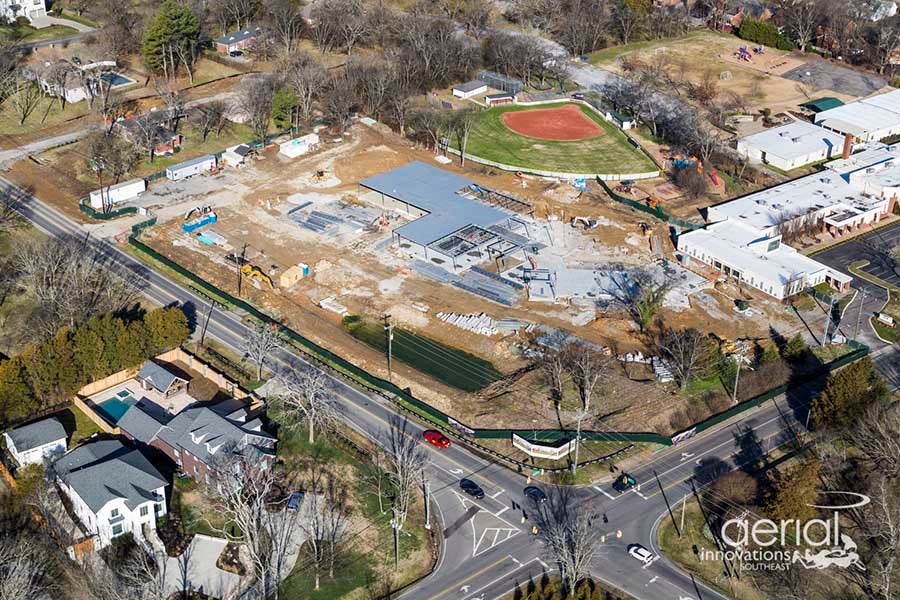Brewer Campus expansion is a historic investment in students’ future
22,000-square-feet of new space will encourage collaborative and creative learning.
Janel Shoun-Smith |

The lower school expansion is strategically designed to foster creative, innovative and practical thinking among children from pre-K to fifth grade.
The students of Lipscomb Academy’s lower school learn not only from books or their teachers, but they learn from the very space around them. By August, Lipscomb’s pre-K through 5th-grade students will have a brand new, larger space strategically designed to foster creative, innovative and practical thinking among children from pre-K to fifth grade.
“When many of us think of education, we think of quiet study and desks that literally keep a student in isolation. But to prepare young people for today’s world, a much different approach is needed,” said Jonathan Sheahen, head of the lower school, which is in the middle of constructing a $16.5 million expansion at the Brewer campus at Granny White Pike and Harding Place.
“In today’s world collaboration, creativity and innovative thinking is required. To learn that takes not isolation, but continuous interaction, hands-on practice with problem-solving, relationship building and encouragement to think freely.”
In the past few years, the lower school has incorporated furniture styles that are more mobile and interchangeable to reflect this approach to education. With the new construction, “We’re expanding this idea into the very walls.”
A library is where you are quiet and absorb knowledge. We see the learning commons as being the opposite–inviting, interactive, participatory. — Jonathan Sheahen, head of the lower school
For example, in the new wing for fifth-graders, the walls themselves will be collapsible to allow changing the number of classrooms or encouraging collaboration. The learning commons will not only serve as the lower school’s library (at four times the size of the current library), but will include a storytelling space for younger children and a Makerspace (with equipment such as a 3D printer and building materials) for older children, he said.
Including future phases expected to reach up to $25 million in improvements, the new construction is the largest investment Lipscomb has committed to its K-12 students. This first phase of the expansion will include 22,000 square feet of new construction and 1,500 square feet of renovated space.
The academy’s teachers, students, board members and supporters gathered in April for a special groundbreaking ceremony to commemorate the beginning of the project.
In addition to the learning commons and the fifth-grade wing, the project includes doubling the size of the cafeteria to create a student commons that will include updated finishes designed to promote a family atmosphere during meals and the equipment needed to make it usable for performances. The student commons will be a more appropriate size for gatherings that are currently held in the gymnasium and will boast much better sound quality, Sheahen said.
Another improvement will be The Solly School, a designated learning and therapy space that provides special education and support services for students with special needs. The Solly School will eventually serve up to 20 students annually.
The current phase of the campus expansion includes space for The Solly School to carry out physical, speech and occupational therapy, including equipment such as ceiling lifts to safely move students in wheelchairs for therapies, and an activity room to allow for safe and therapeutic physical education classes for students who may not be able to be integrated into the existing P.E. classes, said Janna Woodason, the new director of special needs programs.